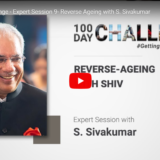The Promise of UID – What to do, to get it right?

As part of the annual ISIS Conference on 18th Dec 2010 at ISB Hyderabad, there was a Panel Discussion on UID. Besides myself, Dr KC Chakrabarty of RBI, Mr Sanjay Swamy of UIDAI and Mr Abhishek Sinha of Eko Financial were the other Panelists. The Panel was moderated by Prof Arun Sundara Rajan.
Before the Panel Discussion, a specially recorded video (will be linked once the Conference Organisers upload the video) of Mr Nandan Nilekani, Chairman of UIDAI was played.
As you would see in the video, Nandan outlined SA, PA & DA of the SA-PA-DA-PPA template, I used my time on the Panel to do a PPA of three of those areas. This is what I said:
Acknowledged existence: Many Indians, especially the poor, cannot prove their identity with legally valid documents. Out of a billion Indians, only 60 million hold passports; there are just about 70 million IT PAN Card holders. It is not difficult for fraudulent third persons to misrepresent the poor in certain transactions. As a result, for example, many of the poor people cannot access social support programmes of the Central and State Governments. Substantial part of the social subsidies meant for the poor get diverted and misappropriated. The proposed UID number helps in accurately establishing the identity of a person and in authenticating any transaction. This will help in reducing misappropriation and lowering leakage from subsidy funds.
But, vested interests won’t be happy with lower corruption in the subsidy system. Powerful among those interests won’t let UID scale! Besides the technological challenges in scaling (mind you, the enrolment system must be fool-proof to eliminate any fake identities, must be robust enough to eliminate duplicates and must be easy & cost effective to verify & authenticate; all these for some 600 million people) that UIDAI is well geared to take on, the execution plan must cognise for the potential challenges arising out of the hurdles created by these vested interests.
I see these hurdles as marketing and social sciences challenges. Instead of clinically enrolling the citizens, the benefits of UID must be widely communicated to the citizens so that they get “enrolled” into seeing UID as a practical solution for their real problems. The people will then collectively find a way to deal with the hurdles created by the vested interests, as they did when ITC eChoupal faced similar resistance years ago. Similarly, it will help if the relevant agencies (eg District Administration) can co-opt the poor in design and execution of the social subsidy schemes. For example, the poor themselves know exactly how they get excluded from many schemes, and what process changes can help include them.
Business Opportunities: To start with, there is a mega business opportunity in the very process of enrolment of citizens into the UID system. Appropriate hardware is required at some 100,000 enrolment centres, along with necessary software to capture the finger prints, iris shots and demographic data. Someone aptly said that India can become the Bio-metric Capital of the world. There will also be similar opportunities in building transaction authentication hardware for different types of establishments using one or more of the UID features.
In the long term, the real value business application of UID is actually in improving effectiveness of financial transactions, consumer loyalty programmes, personalised crop management advisory, health cards for citizens etc. through shared transaction data of every UID across organisations. But, public access to such data raises serious concerns on privacy of individuals and competitive intelligence for businesses.
One way this conflict could be resolved is by limiting the seam-less sharing of such transaction data among a syndicate of organisations or certain type of businesses approved by the individuals for an appropriate value-exchange.
Innovation Ecosystem: Once the data sharing conflict is resolved, a powerful innovation ecosystem will be catalysed by the UID platform. Pretty much like a Development Apps Store! Some of the potential innovations would obviously be yet un-visualised. But, I can surely see ideas that make up for the missing institutions such as credit rating system and dispute resolution mechanisms. Many by many experience rating using the same identity can lead to interesting B2C and C2C applications.
The yet unvisualised innovations could also be mega threats to society. Dutch Census anecdote I recently heard is an example of such a threat. In an early 20th Century Census, Dutch collected the religious affiliation data of their citizens (for building places of worship in their neighbourhoods). A few years later, that data was very handy to Germans in exterminating some 75% of all the Jews listed.
On balance, I say, we must push forward with the UID.
But, raising public awareness of pros & cons of any new system with potential transformational impact, such as UID, is key, rather than selling it as a panacea to all problems…










